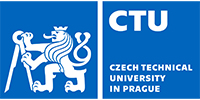About us
As robots are entering unstructured environments with a large variety of tasks, they will need to quickly acquire new abilities to solve them.
Humans do so very effectively through a variety of methods of knowledge transfer – demonstration, verbal explanation, writing, the Internet.
In robotics, enabling the transfer of skills and software between robots, tasks, research groups, and application domains will be a game changer for scaling up the robot abilities.
euROBIN therefore proposes a threefold strategy:
First, leading experts from the European robotics and AI research community will tackle the questions of transferability in four main scientific areas:
1) boosting physical interaction capabilities, to increase safety and reliability, as well as energy efficiency
2) using machine learning to acquire new behaviors and knowledge about the environment and the robot and to adapt to novel situations
3) enabling robots to represent, exchange, query, and reason about abstract knowledge
4) ensuring a human-centric design paradigm, that takes the needs and expectations of humans into account, making AI-enabled robots accessible, usable and trustworthy.
Second, the relevance of the scientific outcomes will be demonstrated in three application domains that promise to have substantial impact on industry, innovation, and civil society in Europe.
1) robotic manufacturing for a circular economy
2) personal robots for enhanced quality of life
3) outdoor robots for sustainable communities.
Advances are made measurable by collaborative competitions.
Humans do so very effectively through a variety of methods of knowledge transfer – demonstration, verbal explanation, writing, the Internet.
In robotics, enabling the transfer of skills and software between robots, tasks, research groups, and application domains will be a game changer for scaling up the robot abilities.
euROBIN therefore proposes a threefold strategy:
First, leading experts from the European robotics and AI research community will tackle the questions of transferability in four main scientific areas:
1) boosting physical interaction capabilities, to increase safety and reliability, as well as energy efficiency
2) using machine learning to acquire new behaviors and knowledge about the environment and the robot and to adapt to novel situations
3) enabling robots to represent, exchange, query, and reason about abstract knowledge
4) ensuring a human-centric design paradigm, that takes the needs and expectations of humans into account, making AI-enabled robots accessible, usable and trustworthy.
Second, the relevance of the scientific outcomes will be demonstrated in three application domains that promise to have substantial impact on industry, innovation, and civil society in Europe.
1) robotic manufacturing for a circular economy
2) personal robots for enhanced quality of life
3) outdoor robots for sustainable communities.
Advances are made measurable by collaborative competitions.
Finally, euROBIN will create a sustainable network of excellence to foster exchange and inclusion. Software, data and knowledge will be exchanged over the EuroCore repository, designed to become a central platform for robotics in Europe.
The vision of euROBIN is a European ecosystem of robots that share their data and knowledge and exploit their diversity to jointly learn to perform the endless variety of tasks in human environments.
The vision of euROBIN is a European ecosystem of robots that share their data and knowledge and exploit their diversity to jointly learn to perform the endless variety of tasks in human environments.




What we want
Objectives
Cognition-enabled transferable embodied AI is the main goal of the euROBIN research agenda and the network of excellence that emerges from it. Scientifically, euROBIN will take a new and integrated perspective in designing the future ecosystem of heterogeneous intelligent machines interacting with humans. Therefore, euROBIN will substantially advance four core scientific topics:
- InterAct
- Learning transfer
- Transferable knowledge
- Human-center transfer
0
Consortium partners
0
Academic partners
0
Industrial partners

0
Researchers
0
ERC grants
0
Countries involved

0
European cities
0
Network EU projects
What we do
Methodology
The basic elements enabling intensive and prolific collaboration within the euROBIN excellence network are:
- Cooperative Competitions and Hackathons
- Cognition-Enabled Transferable Embodied AI
- The European Robotics Collaborative Repository EuroCore
- Annual Scientific Workshops and Science-Industry Dialog
- The Brain Magnet program for Young Researchers and Scientific Fellows
- Cascade funding instruments






The euROBIN network main vision
A European ecosystem of robots that share their data and knowledge and are able, based on their diversity, to jointly learn to perform the endless variety of tasks in human environments.


Specific issued addressed by the euROBIN network
To support the society in its multitude of challenges by AI-based robotics and automation, Europe requires an ecosystem of robots that can be quickly adapted to new needs, by easily transferring and spreading capabilities among application domains and between robot types. Hence, the European robotics research community needs to interconnect its best labs through network instruments, which facilitate the emergence of an AI-powered and Cognitively enabled ecosystem of robots.
Partner list

CREATE
Academic partner

DLR
Project coordinator

TWENTE
Academic partner

FundingBox Accelerator
Industrial partner

IMEC
Industrial partner

TECNALIA
Industrial partner

ABB
Industrial partner

INRIA
Academic partner

University of Bremen
Academic partner

IST-ID
Academic partner

University of Seville
Academic partner

KIT - H2T
Academic partner

KTH
Academic partner

Sorbonne University
Academic partner

Volkswagen Group
Industrial partner

ETH
Academic partner

CTU
Academic partner

DTI
Academic partner

EPFL
Academic partner

PAL robotics
Industrial partner

Research Center Enrico Piaggio
Academic partner

Fraunhofer IPA
Industrial partner

Technical University of Munich
Academic partner
